

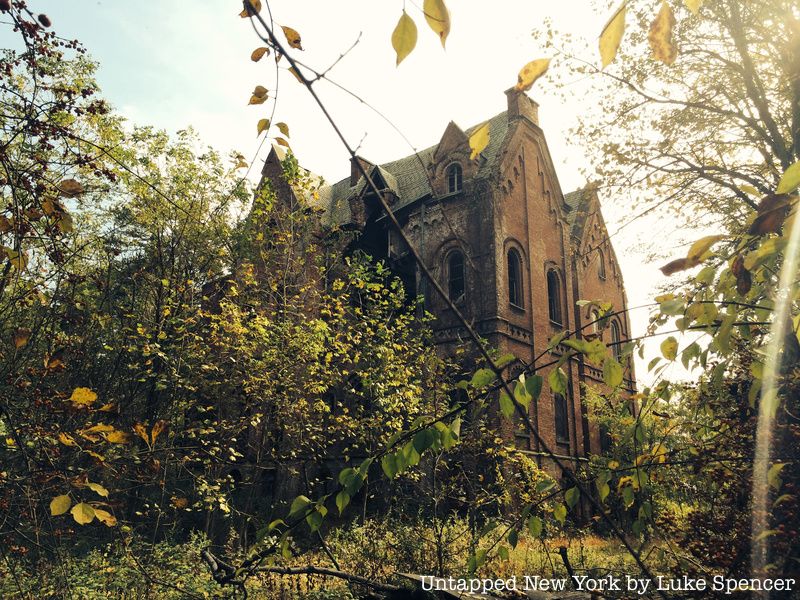
Hidden in the overgrown forest by the Hudson River Valley in Rhinebeck, New York is the Wyndcliffe Mansion. Built in 1853 in the Norman style and commissioned by Elizabeth Schermerhorn Jones, the home inspired a movement of mansion building in the Hudson River valley. Originally sprawled across 80 acres, the mansion was glorious in its prime. Now, bricks falling daily, the mansion stands in its ghastly beauty for visitors who dare to brave its disrepair.
Throughout the 168 years of liveliness and loneliness during the mansion’s existence, both the New York wealthy and the New York curious have explored its beauty. Although some say that the walls of Wyndcliffe Mansion talk, they do not tell all the secrets of this Hudson River Valley treasure. Have no fear, here are ten secrets to learn about without traveling to the depths of the forest.
1. The creation of the Wyndcliffe Mansion inspired the phrase “Keeping up with the Joneses”
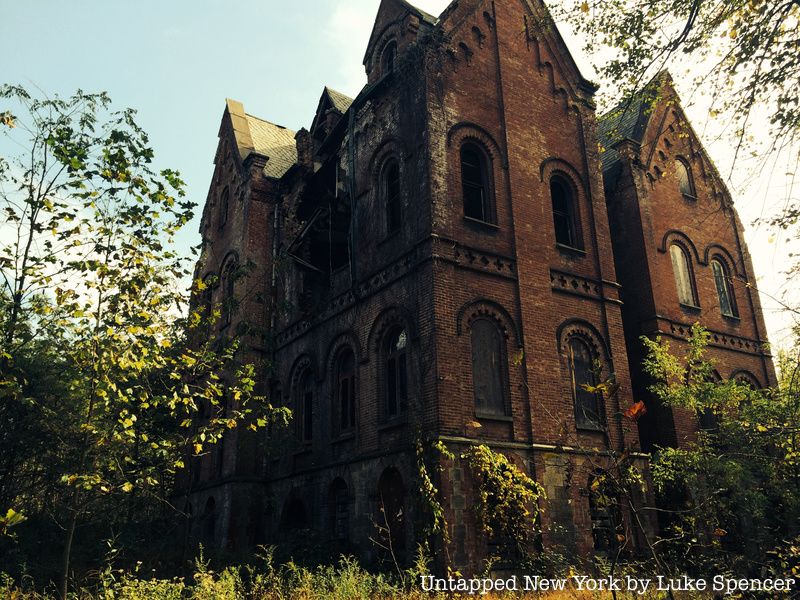
The popular phrase “keeping up with the Joneses” denotes a feeling of inferiority regarding social class and material wealth. When one is “keeping up with the Joneses,” they are trying to match the high standards of their neighbors. After neighbors saw the glorious mansion owned by Elizabeth Schermerhorn Jones, they needed one for themselves, keeping up with the actual Jones family. This phrase is now commonly used throughout the United States.
Following the completion of Wyndcliffe Mansion in 1853, various mansions popped up around the Hudson River Valley including Hyde Park (the Vanderbilt Mansion), Olana (Frederic Edwin Church of the Hudson River School’s Mansion), and the Glenview Mansion (owned by John Bond Trevor, a New York financier). Many of these mansions are still in good condition today and can be visited by mansion enthusiasts. Although they tried to “keep up with Joneses” in their prime, they have surpassed the Joneses in the current era.
2. Edith Wharton spent her summers at the Wyndcliffe Mansion
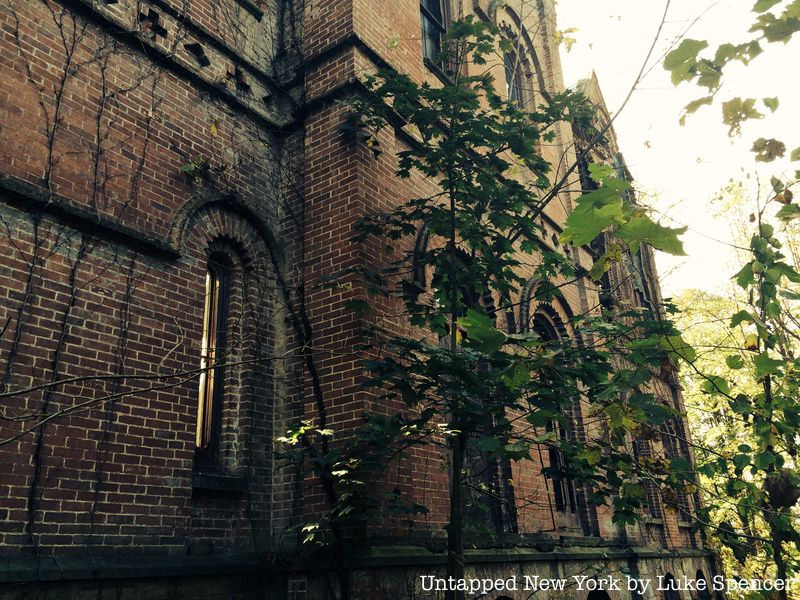
Edith Wharton, American novelist and author of books such as The Age of Innocence and The House of Mirth was Jones’ niece. Although she often feared returning to the mansion each summer, it later inspired some of her novels. Calling the mansion Rhinecliff in her recollections, Wharton observed in her autobiography, A Backward Glance “I was obscurely conscious of a queer resemblance between the granite exterior of Aunt Elizabeth and her grimly comfortable home.”
She later describes the mansion as something that evoked terror. With a note of disgust, she wrote “My visual sensibility must always have been too keen for middling pleasure; my photographic memory of rooms and houses – even those seen but briefly, or at long intervals – was from my earliest years a source of inarticulate misery, for I was always vaguely frightened by ugliness. I can still remember hating everything at Rhinecliff, which, as I saw, on rediscovering it some years later, was an expensive but dour specimen of Hudson River Gothic.”
Although her review of the mansion leaves much to be desired, abandoned building enthusiasts still flock to the “dour specimen of Hudson River Gothic” each year. For those who want to see where Edith Wharton spent the rest of her time, they can visit her birthplace at 14 W. 23rd street.
3. Underground pipes delivered items to the tennis court
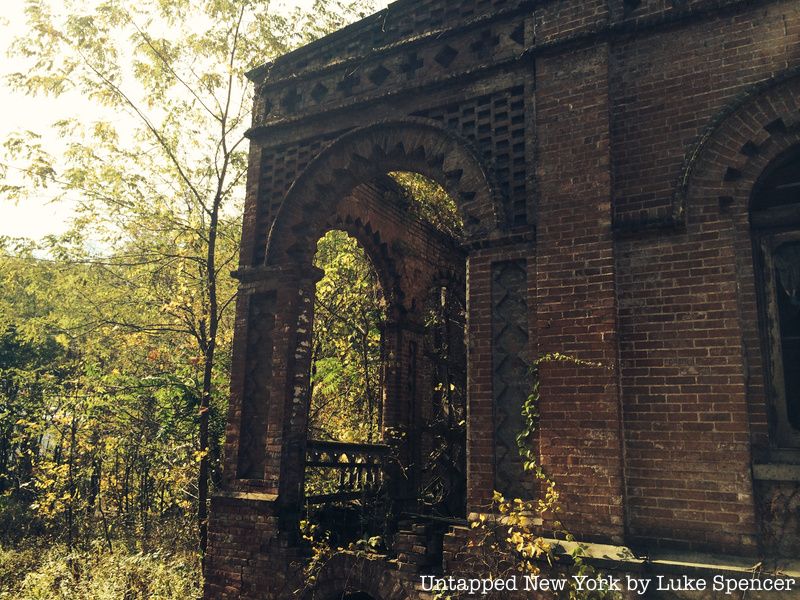
Although the tennis courts on the property are currently gone, buried in decades of overgrowth, it is said that underground pipes once reached from the mansion to the courts. After Elizabeth Jones died, Andrew Finck purchased the mansion and installed pipes that delivered beer to players.
This custom pipe system, installed following Finck’s purchase of the mansion in 1886, was a testament to the glory of the mansion. Although pipes from room to room are feasible in the homes of the wealthy in modern society, the technology was ahead of its time in the late 19th century.
4. Wyndcliffe Mansion centered around a three-story atrium
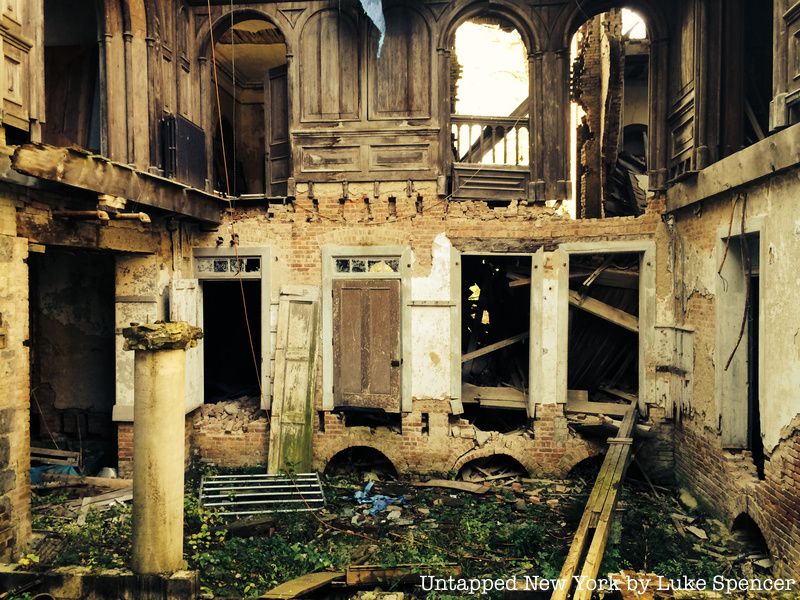
George Veitch designed Wyndcliffe Mansion, along with the first Protestant Episcopal Church of the Messiah in Rhinebeck, New York. The mansion is designed in the Norman style, which is characterized by spatial compartmentalization and high arches. This is evident by the arched windows and also an atrium in the mansion that spans three floors.
Tiffany stained-glass is said to have topped the atrium, although it has been destroyed for decades. As much of the roof of the mansion has fallen, the atrium is exposed to the elements. The mossy ground of the atrium, covered in fallen debris, is all that remains of the glory.
5. Andrew Finck renamed the property “Linden Grove”
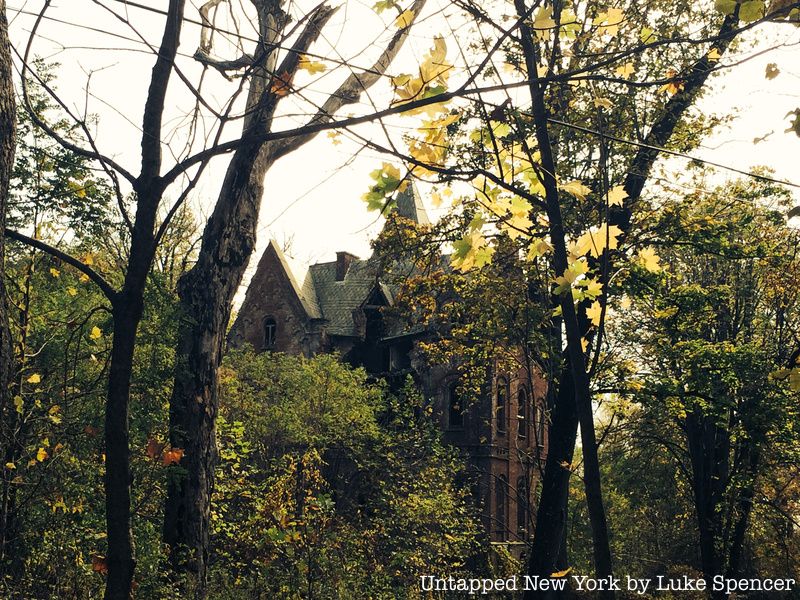
Although initially named Wyndcliffe Mansion and affectionately called “Rhinecliffe” by Jones’ family, the Finck era of the home brought out new nicknames. Andrew Finck bought the home from Jones for $25,000, but family members later sold the home to each other for a dollar.
The Finck family called the mansion “Linden Grove” as they familiarized themselves with the mansion. The large amount of linden trees around the property still exists today. The family affectionately called the mansion “Finck Castle” until Anna Wolf Finck Rice sold the property. Following Finck ownership dynasty of Wyndcliffe Mansion, no owners maintained the property for an extended period of time.
6. The mansion fell into disrepair after abandonment in 1950s
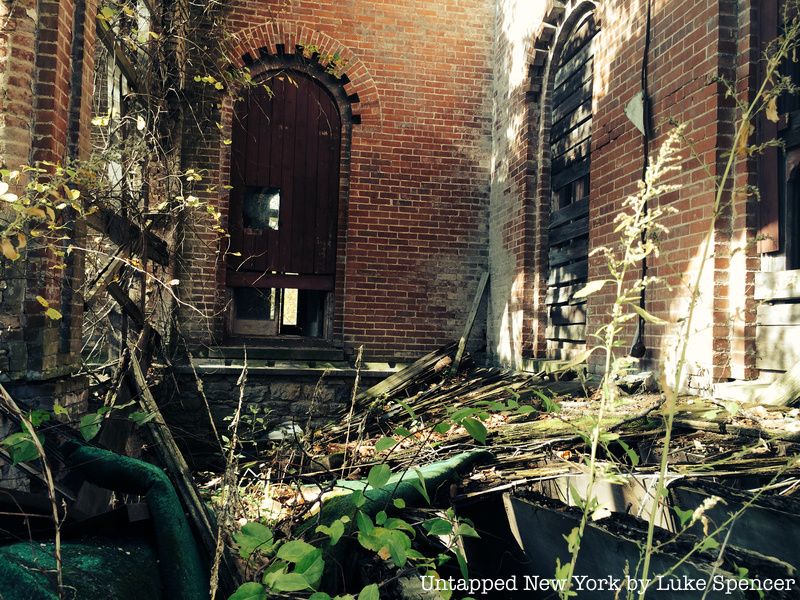
Throughout the Great Depression, few owners could afford to own such a luxurious property. Once Theodore Finck passed away in Wyndcliffe Mansion, he bequeathed the mansion to his daughter Anna Wolf Finck Rice. The property shifted hands a few more times after 1936, when Rice left, until it was abandoned in the 1950s.
The property remained in good condition until the 1980s, staying intact. In 1998, the eastern turet collapsed, marking the beginning of the end of Wyndcliffe Mansion. Now, portions of the second story have fallen, along with the entirety of the eastern wing. Only portions of the roof remain, leaving the floors of the mansion privy to the elements. Moss and overgrowth covers much of the fallen turrets and columns. As visitors approach the property, they only see the tip the property peaking out of an overgrown forest.
7. The Ghost of Jones is said to haunt the property

As visitors traverse through the precarious ruins, creaks and falling objects remind them of the Ghost of Jones who allegedly haunts the property. There is no evidence that the ghost of Elizabeth Schermerhorn Jones haunts the property, but some say no one succeeds in repairing the property because her ghost prevents them from doing so.
Theodore Finck died on property before he passed the mansion to his daughter. Wharton’s writing boasts the intimidating exterior of Wyncliffe Mansion and mysterious winds seem to echo the calls of those who have passed away in the mansion. Nevertheless, many brave the trek to Rhinbeck, New York where they can see the allegedly haunted home.
8. The house was last sold for $120,000
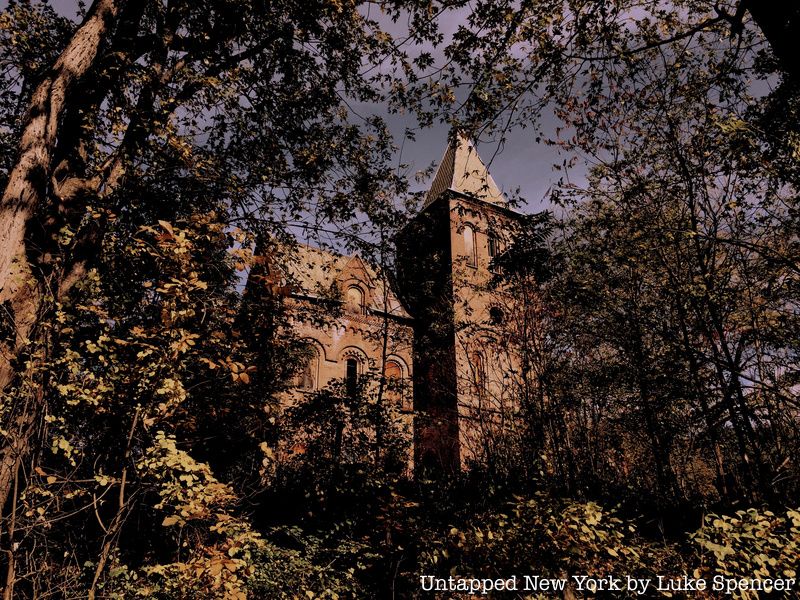
Despite the state of disrepair of Wyndcliffe Mansion, owners have purchased the property twice since the beginning of its decay. In 2003, an owner cleared shrubs and promised to refurbish the mansion, bringing it back to the peak of its glory. He cleared the overgrowth and built a fence, but no progress occurred in terms of rebuilding the home.
Ownership transferred a final time in 2016. The current owner of the mansion purchased the property for $120,000 and planned to demolish the property. When Finck purchased the intact mansion, it cost $80,000. Nevertheless, the new owner filed an application to demolish the property. However, it still stands tall in the overgrown Hudson River Valley today.
9. Wyndcliffe Mansion was never granted a place on the National Register of Historic Places
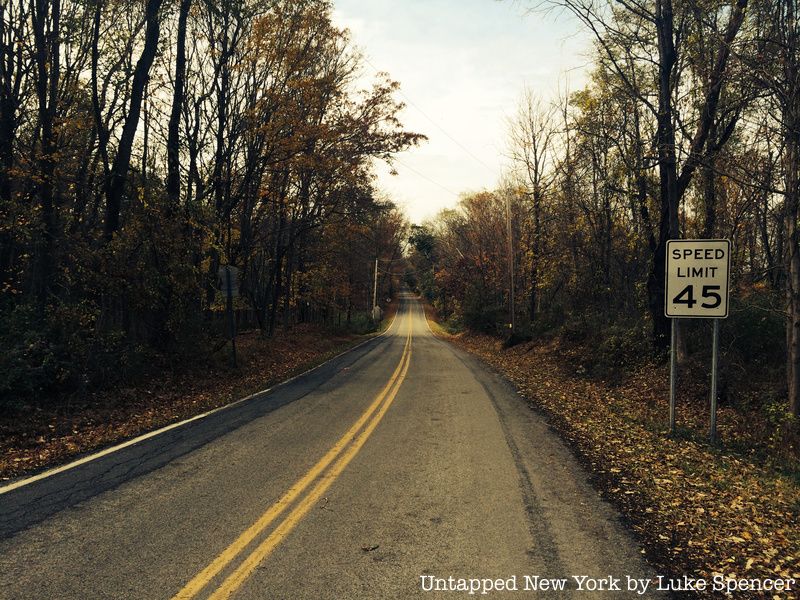
Although some claim that the mansion has a spot on the National Register of Historic Places, this is a myth. According to the National Park Service, the National Register of Historic Places serves to “coordinate and support public and private efforts to identify, evaluate, and protect America’s historic and archeological resources.” As it seems that Wyndcliffe Mansion is destined for destruction, it would take a miracle for it to find a spot on the list.
However, the home is part of the Hudson River Historic District, a district that prioritizes the preservation of its properties. This district stretches over 22,205 acres or 32 miles and includes famous homes such as Wilderstein, Montgomery Place, among others. Stretching from Germantown to Hyde Park, the district honors the historical significance of the Hudson River Valley.
10. A fence encloses the property, but there are no trespassing signs
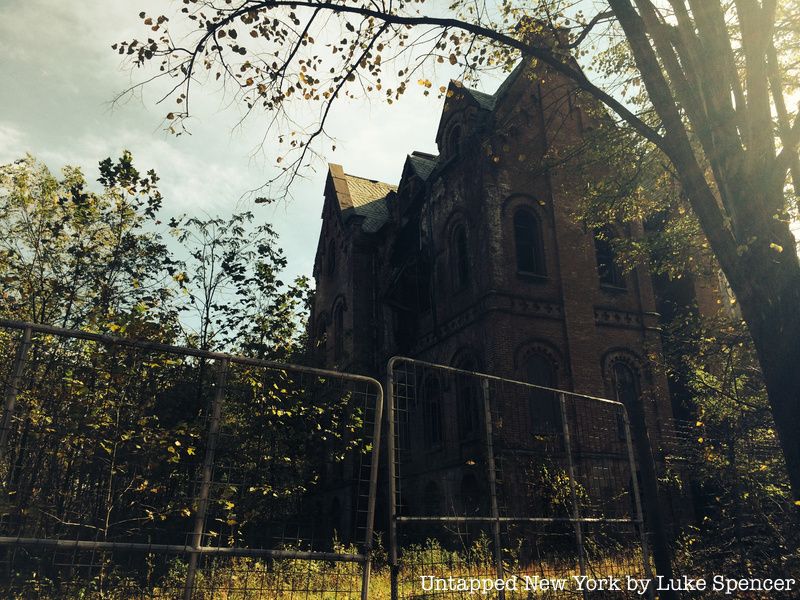
When an owner of Wyndcliffe Mansion set up a fence, no one took it down. This does not deter curious people who traverse the private property. Some who have visited the mansion call the fence and the rose bushes that protect the property, “a pathetic excuse for a barrier.”
A two hour and 107 mile drive from New York City, those who have a car can make it a day trip if they dare to brave the intimidating mansion. However, as the New York wealthy strove to “keep up with the Joneses,” there are other functioning mansions to visit on the way. As mansion enthusiasts take in the beauty of the valley, they can admire the various types of architecture as well.
Next, check out 28 gorgeous Hudson Valley Estates you can visit legally and safely!

